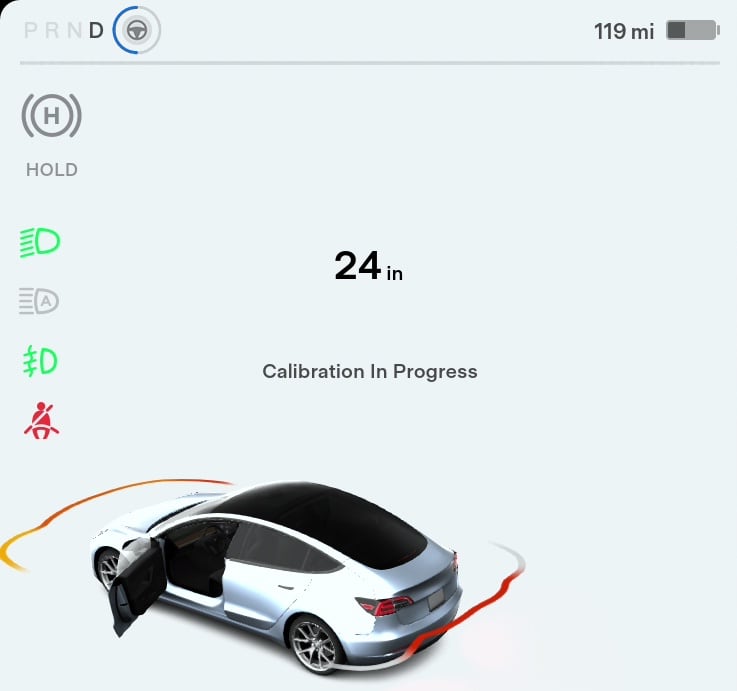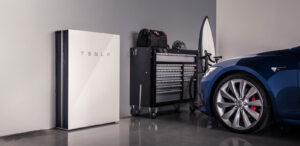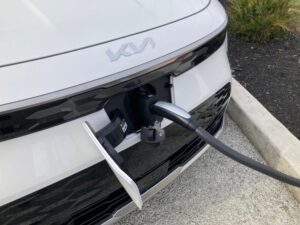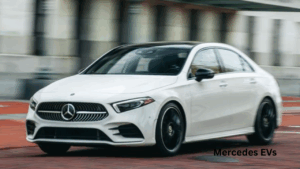Tesla battery calibration usually takes a few hours. The process can vary based on the model and battery condition.
Calibration ensures the battery management system accurately reads the battery’s charge and health. Understanding Tesla battery calibration is essential for optimizing your vehicle’s performance. As an electric vehicle owner, you may wonder about the calibration process’s duration and significance. Proper calibration helps in maintaining the efficiency and longevity of your Tesla’s battery.
It involves adjusting the battery management system to ensure accurate readings of the battery’s charge level. This can impact your driving experience, including range estimation and battery life. Knowing how long this process takes can aid in planning your schedule, ensuring that your vehicle is ready when you need it. Dive into our detailed guide to learn more about this crucial aspect of Tesla ownership.
Tesla Battery Calibration Basics
Tesla battery calibration is vital for maintaining optimal performance. Understanding the basics can help improve your car’s efficiency. Calibration aligns the battery’s sensor readings with its actual capacity. This process ensures accurate battery life estimation. Without proper calibration, you might face unexpected range reductions.
Purpose Of Calibration
The main goal of calibration is accuracy. It ensures the battery charge display is precise. Calibration helps in assessing the battery’s health. It aids in predicting the distance you can travel. This process identifies discrepancies in energy storage. It recalibrates the system to reflect real-time capacity.
Impact On Performance
Proper calibration enhances battery performance. It improves energy efficiency during drives. Your Tesla runs smoother with accurate battery data. The car’s range estimation becomes reliable. Calibration avoids sudden energy loss during trips. It optimizes the vehicle’s overall functionality.
Factors Influencing Calibration Time
Understanding the factors that influence Tesla battery calibration time can help owners manage expectations. Various elements play a role in how long this process takes. Recognizing these factors can aid in maintaining battery health and performance.
Battery Age And Condition
Older batteries may take longer to calibrate. Wear and tear can affect efficiency. Battery condition plays a crucial role too. A well-maintained battery calibrates faster. Regular checks help in maintaining optimal condition.
Software Updates
Software updates can impact calibration time. New updates might alter calibration processes. Tesla frequently releases updates to improve performance. Keeping software up-to-date ensures smoother calibration. Always check for the latest versions before starting calibration.
Steps In The Calibration Process
Understanding the steps in the Tesla battery calibration process can seem daunting, but it’s essential for optimizing your vehicle’s performance. Calibration ensures that your Tesla’s battery management system accurately reflects the battery’s capacity, helping you achieve a reliable range estimate. Let’s break down the calibration process into manageable steps to make this task easier and more efficient.
Initial Setup
Begin your calibration by charging your Tesla to 100%. This may seem straightforward, but it’s a crucial step in resetting the battery management system. Ensure your car is parked in a safe location, especially if you plan to leave it charging overnight.
Once fully charged, drive your Tesla until the battery is nearly depleted. This doesn’t mean running it down to 0%, but get as close as you can. Doing this allows your car to recalibrate its understanding of the battery’s range.
Monitoring Progress
During your drive, pay close attention to the car’s energy consumption and range. You might notice that the range estimate fluctuates more than usual; this is part of the recalibration process.
Keep an eye on your Tesla’s energy graph. It will offer insights into how your driving habits affect battery life. Are you accelerating too quickly? Are you using climate control excessively? Adjust accordingly to see how it influences the range.
What can you learn from this process? The calibration serves as a reminder of how driving style affects battery life. It also helps you understand the importance of regularly checking your Tesla’s energy usage. Calibration isn’t just about numbers; it’s about maximizing your driving experience.
Completing these steps will help ensure your Tesla’s battery management system provides the most accurate range estimates possible. By following these simple yet effective steps, you contribute to the longevity and efficiency of your vehicle. Consider this calibration process as a periodic check-up, much like maintaining your health; it’s an investment in your Tesla’s future performance.
Average Duration Of Calibration
Understanding the average duration of Tesla battery calibration is crucial for any Tesla owner. Calibration helps ensure your battery’s range accuracy, allowing you to make the most of your electric vehicle. But how long does this process actually take? Let’s dive into the typical timeframes and variations by model.
Typical Timeframes
On average, a Tesla battery calibration can take anywhere from a few hours to a couple of days. This might seem like a wide range, but it largely depends on your driving habits and the conditions under which you calibrate.
If you’re someone who frequently drives long distances, you might find the calibration process shorter, often completed in a single day. On the flip side, if your daily drives are short, it might take a bit longer. It’s all about giving the battery enough time to accurately measure its capacity.
Have you ever wondered why your battery percentage sometimes drops unexpectedly? Calibration could be the answer. Ensuring your battery is accurately calibrated can prevent those surprises and give you peace of mind.
Variations By Model
Different Tesla models can have varying calibration durations. For example, the Model 3 might calibrate more swiftly compared to the Model S, thanks to differences in battery management systems.
Model-specific software updates can also influence calibration time. Newer models tend to have advanced software that streamlines the process. If you own an older model, updates might be necessary to speed things up.
Curious about how your specific model fares? Tesla forums and user groups can offer firsthand insights, sharing experiences that could help you anticipate your battery’s calibration time.
Is your model taking longer than expected? Checking for software updates or consulting with Tesla service could be the key to a faster calibration.
Think about how your driving patterns might affect your calibration time. Are there ways you could optimize your routes or driving habits for a quicker calibration? Exploring these options could lead to more efficient battery use.
What are your experiences with Tesla battery calibration? Sharing your stories can help fellow Tesla owners navigate their own calibration journeys more effectively.
Signs Of Successful Calibration
Tesla battery calibration success shows through improved efficiency and range. Calibration often takes several hours, depending on usage. Patience ensures optimal battery performance, enhancing your driving experience.
Calibrating your Tesla battery can feel like a mysterious process, but understanding the signs of a successful calibration can make all the difference. After going through the calibration steps, you might wonder if everything went smoothly. Knowing what to look for can give you peace of mind and ensure your Tesla is running optimally. ###Improved Range Accuracy
One of the most immediate signs of a successful calibration is improved range accuracy. You might notice that your Tesla now provides a more precise estimate of how far you can go on a full charge. This accuracy can help you plan your trips better, reducing the anxiety of running out of charge unexpectedly. Have you ever found yourself second-guessing the displayed range? A successful calibration should put those doubts to rest. ###Enhanced Battery Health
Another sign of successful calibration is enhanced battery health. Your Tesla battery might show signs of improved longevity and efficiency. Calibration can help even out the charge distribution across the battery cells, which can prevent unnecessary strain on individual cells. This, in turn, can lead to a longer-lasting battery, saving you time and money on replacements. You might also notice fewer fluctuations in battery performance. Does your Tesla feel more consistent in its power delivery? That’s likely because the battery is now operating more efficiently after calibration. By keeping an eye out for these signs, you can ensure your Tesla is performing at its best. Have you experienced any changes after calibrating your Tesla battery? Sharing your experiences can help others in the Tesla community understand and anticipate the benefits of a well-calibrated battery.
Credit: www.notateslaapp.com
Common Issues During Calibration
Calibrating your Tesla battery is crucial for optimal performance. However, you might face some challenges during this process. It’s essential to be prepared and know what common issues can arise. Understanding these can save you time and frustration, ensuring that your Tesla runs smoothly.
Unexpected Delays
Sometimes calibration can take longer than expected. This might be due to the battery not being fully charged or external temperature changes affecting the process. You might find yourself wondering why it’s taking so long.
Patience is key here. Ensure your Tesla is parked in a safe and stable environment. A personal experience taught me that parking in a garage can sometimes speed up the process, as it maintains a consistent temperature.
Error Messages
Error messages can appear, causing concern. These messages might highlight issues with battery communication or software glitches. It’s important not to panic.
When faced with an error message, try restarting your vehicle. A simple reboot can often clear the message, allowing the calibration to continue. If the issue persists, contacting Tesla support can provide further guidance.
Have you ever faced a calibration issue that seemed impossible to solve? Share your experiences and solutions below. Knowing these common issues can help you be proactive, rather than reactive, during your Tesla battery calibration process.
Tips For Efficient Calibration
Calibrating your Tesla battery ensures accurate range estimation. Efficient calibration enhances performance and longevity. Follow these tips to make the process smooth and effective.
Preparation Techniques
Start with a full battery charge. A complete charge helps the car’s system understand the battery’s limits. Drive your Tesla until it reaches a low charge level. This helps in recalibrating the battery management system. Record your typical driving habits. This data assists in understanding battery consumption patterns.
Optimal Conditions
Choose a clear day for calibration. Weather impacts battery behavior. Avoid extreme temperatures. The battery performs best in moderate climates. Select a flat road for consistent driving. Elevation changes affect energy consumption. Ensure minimal traffic for uninterrupted driving. Stops and starts can skew calibration results.

Credit: www.reddit.com
Post-calibration Care
Calibrating your Tesla battery is crucial for optimal performance. But what happens after calibration? Proper post-calibration care ensures the battery runs efficiently. Following a few simple steps can extend your battery’s lifespan. It’s important to maintain the health of your Tesla battery.
Maintaining Battery Health
Keeping your Tesla’s battery healthy requires regular attention. Avoid letting the battery drain completely. Try to charge it before it drops below 20%. This helps maintain its capacity. Use the regenerative braking feature whenever possible. It helps recharge the battery as you drive.
Storing your Tesla in a moderate climate is beneficial. Extreme temperatures can affect battery performance. If possible, park in a garage to avoid direct sunlight. Regular software updates can enhance battery efficiency. Tesla often releases updates to optimize performance.
Scheduled Check-ups
Regular check-ups can prevent unexpected issues. Schedule maintenance with Tesla to keep your battery in good shape. Technicians can identify potential problems early. They can also update your system if needed. Routine check-ups ensure your vehicle remains reliable.
Consider setting reminders for these check-ups. Regular maintenance keeps your battery’s warranty valid. It also ensures you get the best performance from your Tesla. By following these steps, you can enjoy a smoother driving experience.

Credit: www.reddit.com
Frequently Asked Questions
Can I Stop Charging My Tesla While Calibrating My Model?
Yes, you can stop charging your Tesla while calibrating your model. Calibration doesn’t require charging. Just ensure the vehicle is parked safely and follow the calibration instructions properly. Charging or not charging does not impact the calibration process, allowing flexibility during setup.
Why Does My Tesla Keep Saying Calibration In Progress?
Your Tesla displays “calibration in progress” when its cameras or sensors are adjusting for optimal performance. This process ensures accurate lane-keeping and Autopilot functionality. Calibration typically completes after driving a few miles on well-marked roads. If the message persists, contact Tesla support for assistance.
Why Does My Tesla Say Calibrating When Charging?
Tesla displays “calibrating” during charging to optimize battery performance and ensure accurate range estimation. This process balances battery cells and improves overall efficiency, enhancing your driving experience. Calibration is normal and helps maintain the longevity and reliability of your Tesla’s battery system.
How Can I Speed Up My Tesla Calibration?
Drive your Tesla consistently on well-marked roads. Maintain a steady speed and avoid frequent stops. Ensure all cameras and sensors are clean for optimal performance. Regular use helps the system calibrate faster.
Conclusion
Tesla battery calibration usually takes a few hours. Patience is key. Proper calibration ensures optimal battery performance. Regular calibration helps maintain battery health. It’s a simple process. You can do it at home. Follow Tesla’s guidelines closely. This will ensure accuracy.
Remember, better battery life means more driving pleasure. Calibration is part of good maintenance. It helps extend battery longevity. Taking these steps can improve your Tesla experience. Always keep an eye on your car’s performance. It pays off in the long run.
Enjoy smoother rides with a well-calibrated battery.


